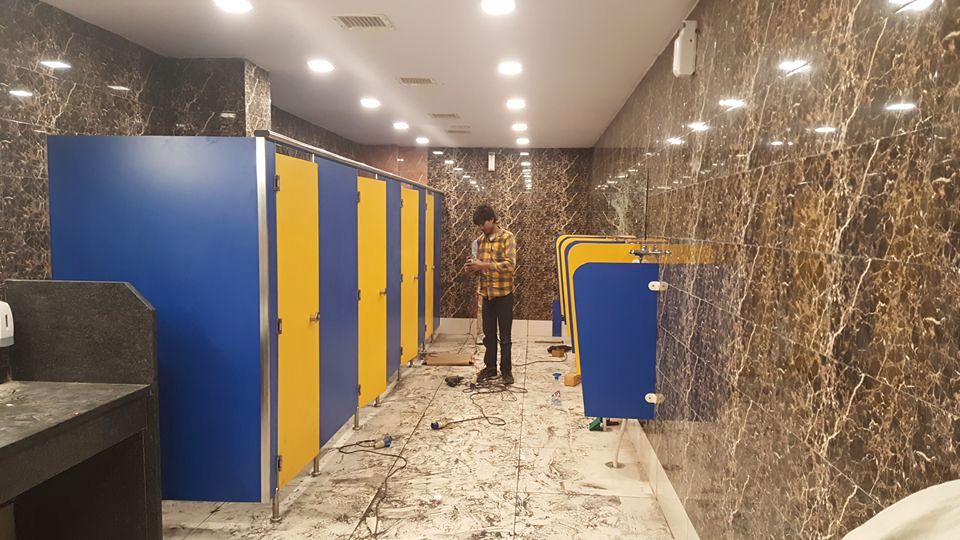Elevate Your Restroom: Premium Toilet Cubicles
Toilet Cubicles
Toilet cubicles are an essential component of any public restroom, providing privacy and comfort to users. They come in various designs and materials, each serving a specific purpose. In this article, we will explore the importance of toilet cubicles in public spaces, the different types available, the materials used in their construction, and the factors to consider when choosing the right cubicles for your space.
Introduction to Toilet Cubicles
Toilet cubicles, also known as bathroom stalls or partitions, are enclosed areas within a restroom that provide privacy for users. They are typically made of durable materials such as high-pressure laminate (HPL), solid phenolic core (SPC), or stainless steel. Toilet cubicles are essential in public spaces such as restaurants, malls, schools, and offices, where multiple people may need to use the restroom at the same time.
The Importance of Toilet Cubicles in Public Spaces
Toilet cubicles play a crucial role in maintaining hygiene and privacy in public restrooms. They help prevent the spread of germs and bacteria by providing a barrier between users. Additionally, they create a comfortable and private space for users to attend to their personal needs.
Types of Toilet Cubicles
Standard Toilet Cubicles
Standard toilet cubicles are the most common type and are suitable for general use. They are available in various sizes and configurations to accommodate different space requirements.
Accessible Toilet Cubicles
Accessible toilet cubicles are designed to meet the needs of individuals with disabilities. They are larger in size to accommodate wheelchairs and include features such as grab bars and emergency pull cords.
Baby Changing Cubicles
Baby changing cubicles are designed for parents or caregivers to attend to the needs of infants. They are equipped with a changing table and are often located in family restrooms.
Materials Used in Toilet Cubicles
High-Pressure Laminate (HPL)
HPL is a popular choice for toilet cubicles due to its durability and ease of maintenance. It is available in a wide range of colors and finishes, making it suitable for various design schemes.
Solid Phenolic Core (SPC)
SPC is a more robust material than HPL and is resistant to scratches, moisture, and vandalism. It is an ideal choice for high-traffic restrooms.
Stainless Steel
Stainless steel toilet cubicles are highly durable and resistant to corrosion. They are often used in high-end facilities where aesthetics are important.
Factors to Consider When Choosing Toilet Cubicles
When choosing toilet cubicles, several factors should be considered:
Durability: The cubicles should be able to withstand heavy use and maintain their appearance over time.
Hygiene: The materials used should be easy to clean and resistant to bacteria growth.
Aesthetics: The cubicles should complement the overall design of the restroom and enhance the user experience.
Installation and Maintenance of Toilet Cubicles
Proper installation and maintenance of toilet cubicles are essential to ensure their longevity and functionality. Regular cleaning and inspection can help prevent damage and ensure the cubicles remain in good condition.
Trends in Toilet Cubicle Design
Modern toilet cubicles are designed to be more than just functional. They incorporate design elements that enhance the overall restroom experience, such as integrated lighting, touchless fixtures, and sustainable materials.toilet cubicles are an essential component of any public restroom, providing privacy, hygiene, and comfort to users. By choosing the right type and material, and ensuring proper installation and maintenance, you can create a restroom environment that meets the needs of your users.
FAQs
Are toilet cubicles only used in public restrooms?
No, toilet cubicles are also commonly used in commercial spaces such as offices and schools.
Can toilet cubicles be customized to fit specific design requirements?
Yes, many manufacturers offer customizable options for toilet cubicles to fit the design needs of different spaces.
Are there any regulations regarding the installation of toilet cubicles?
Yes, there are regulations regarding the dimensions, accessibility, and installation of toilet cubicles, particularly in public spaces.
How long do toilet cubicles typically last?
The lifespan of toilet cubicles depends on the material and maintenance, but they can last for many years with proper care.
Can toilet cubicles be recycled at the end of their lifespan?
Yes, many materials used in toilet cubicles, such as HPL and SPC, can be recycled at the end of their lifespan.




Comments
Post a Comment